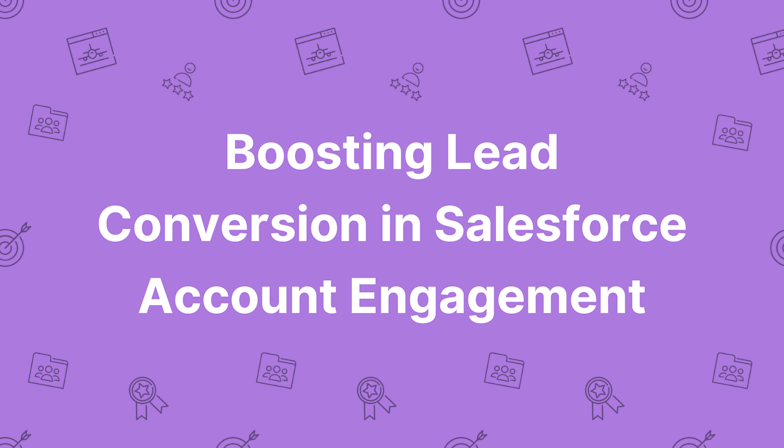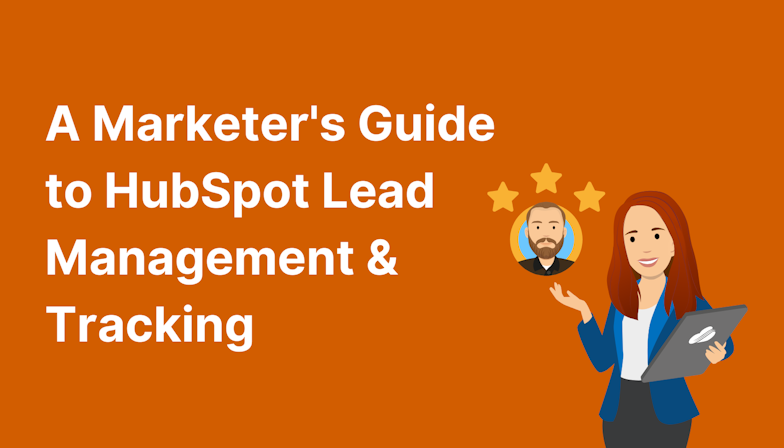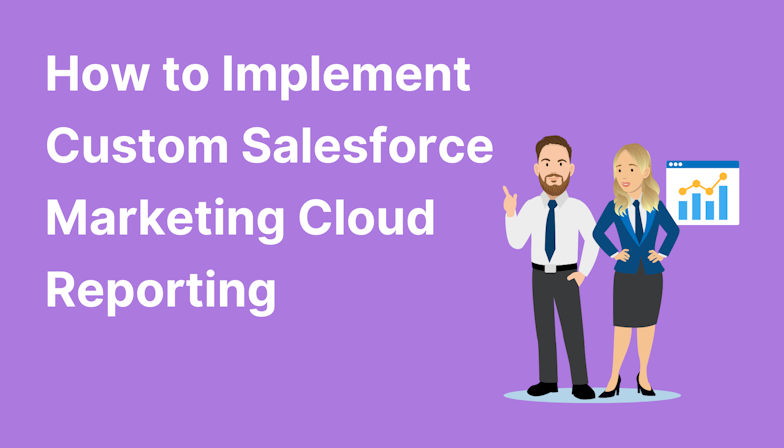Pardot (aka Account Engagement) has a massive range of features and tools that help marketers optimise customer journeys and drive engagement. So many, in fact, it can be a little overwhelming for anyone who isn’t an absolute pro. As a specialist consultant working with Pardot day in, day out, I want to help users tap into the features that can make the biggest impact on your marketing activity by revealing 12 expert Pardot tips, right here, right now.
You don’t need to follow all 12 tips and tricks at once, of course. Choose your favourites, perhaps the easier ones to implement, and work your way through the list. Ultimately though, if you can follow them all, you’ll soon rise to the very top of your marketing automation game.
Expert Pardot tips
- Dynamic content isn’t just for emails
- Retargeting, the Pardot way
- Segmentation rules are your best friend
- Scoring Categories tell a story
- Associate your assets for better insights
- Pay attention to Email Client reports
- Dependent fields can add value
- Link Automation Rules to landing page views
- Custom Redirects for asset insights
- Give your sales team insights by logging page visits
- Assign prospects via Salesforce active assignment rule
- B2BMA for superior reporting
Some of these features are available in Pro and Enterprise editions of Account Engagement (Pardot), and available in Standard for an additional cost.
1. Dynamic content isn’t just for emails
Dynamic content can really level up your website. Instead of a generic web page that summarises your product or service in a generic catch-all’ way, you can display a highly personalised page that focuses on a known prospect’s industry, interests, or even previous conversations you’ve had with them.
Personalising content in this way is highly effective for driving higher conversion rates, with 71% of consumers expecting personalisation, and companies that grow faster driving 40% more of their revenue from personalisation than their slower-growing counterparts.
Dynamic content isn’t just for web users either. It can actually help you to manage your web content more easily!
Let’s say you have a piece of information across several pages on your website that you have to change manually every month, you can make it dynamic. This way, you’ll only have to change it once within Pardot to see the update in multiple locations and you’ll save yourself loads of time.
Dynamic content is especially useful for date-related content. An easy example: I set this up for a crowd-lending Fintech company that needed to update its statistics each month on multiple pages of the website. We used dynamic content to say As of XX/XX/XX’ which saved a lot of time and ensured no inaccuracies existed!
What’s more, did you know you can embed forms with dynamic content, which means you can show different forms to different prospects depending on certain criteria?
This is a makeshift way of enabling A/B testing on forms if you manage the data well enough. One half receives form A, the other form B, and you make a decision on the optimal form by comparing form submissions!
You can also display forms based on the prospect’s grade or score i.e. showing a really short form for prospects with a low score, and showing a form with a sales-led offer for those prospects with high grades.
2. Retargeting, the Pardot way
A huge benefit of using landing pages that are hosted on Pardot is the ability to include certain logic in your Engagement Studio.
Let’s say a prospect views one of your landing pages but doesn’t fill out the form. Why not add some logic into your program so they receive an email a few days later with an exclusive offer?
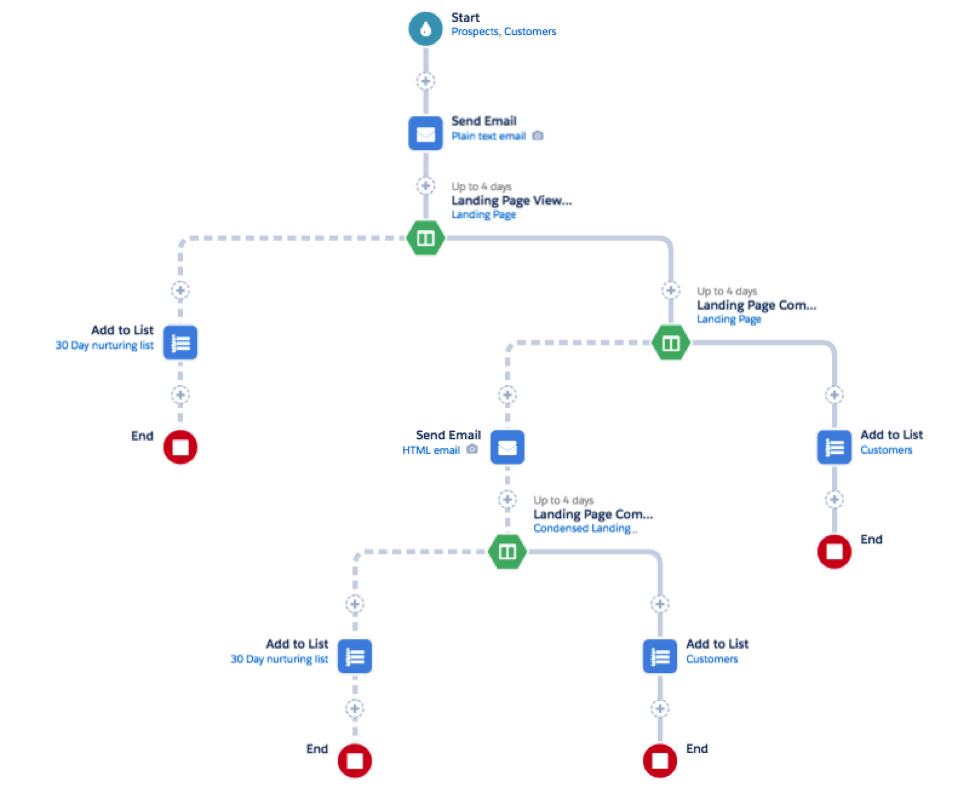
Watch your conversion rates and sales increase with Pardot’s own method of retargeting, one that’s quick and easy to implement.
Read more about Pardot Retargeting in Engagement Studio.
3. Segmentation Rules are your best friend
Want to impress your colleagues with incredibly granular insights about your prospects and leads? Segmentation Rules are one-time automations that enable you to create a static list based on your choice of criteria.
Using this feature can give you access to detailed information about segments of your database, so you can:
- drill down into user behaviour.
- gain a more in-depth understanding.
- create insightful reports on specific audience groups.
It’s very useful if you need to pull a quick report such as the number of new customers who came from a specific campaign, and how much they spent within a set timeframe, for example.
4. Scoring Categories tell a story
A clear strategy for Pardot Scoring Categories can do you the world of good. For a company that sells multiple products or services, categories give a clear indication as to what a prospect is interested in.
As an example, imagine a technology company that offers broadband, mobile contracts, and even TV. Using Scoring Categories, the Marketing Manager can assign all marketing assets to individual categories’ i.e. one for each service type. Depending on the assets a prospect engages with, their score for each category will change. If a customer accumulates 100 mobile contract points and only 10 broadband, there are no prizes for guessing what they’re interested in!
But that’s only half the story. By setting up Scoring Categories for each brand of phone, the tech company will know the exact product they want and can send them an offer they can’t refuse, at exactly the right moment.
Delve into Scoring Categories with this dedicated blog post: How Pardot Scoring Categories Lead to Better Segmentation.
5. Associate your assets for better insights
This is closely related to tip five because forgetting this one can impact your scoring category system. If you don’t associate your assets to the right folder, you’ll miss out on a ton of useful insights and it could even interfere with some of your Automation Rules.
Remember to change the folder when you save an asset and make sure everything is in the right home!
Whilst we’re here, it’s worth mentioning that sensible naming conventions can save you a whole load of time and it’s worth using a coherent and logical structure when creating new Campaigns too. New Pardot users, trust me on this one, it’s worth the time to get organised.
6. Pay attention to Email Client reports
Ever wondered how many people are viewing your beautifully responsive emails on mobile? Wonder no more. Email Client reports are where you’ll see a breakdown of who is using what device when viewing your emails.
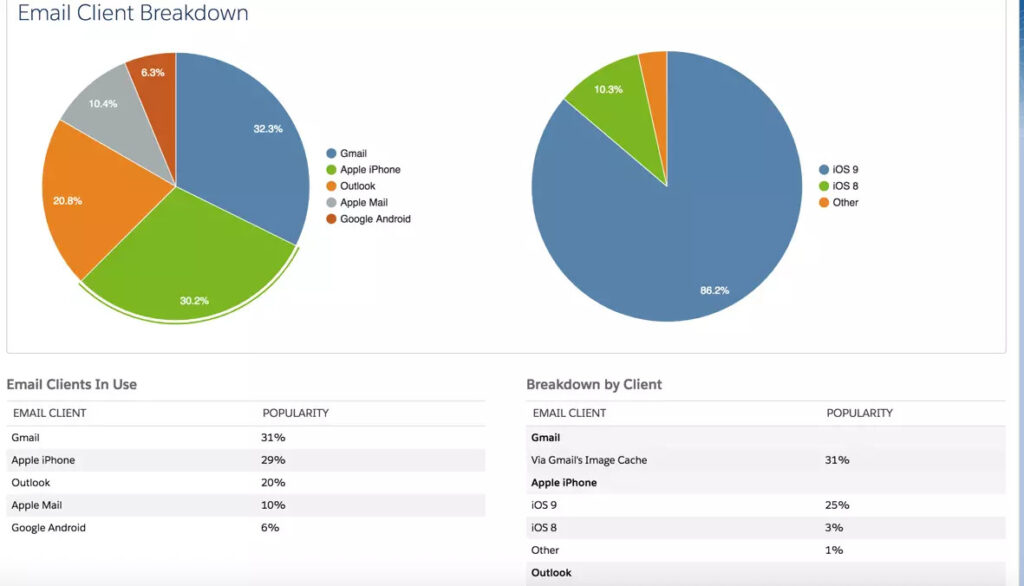
Source: Trailhead
With hybrid devices like the Google Pixelbook, which is a laptop and a tablet, and with mobile usage at an all-time high, mobile responsiveness is a big deal. It’s crucial that you take the typical device and browser of your audience into consideration. What’s more, if you can see a large chunk of your audience is using mobile, why not start to add some really engaging mobile-specific content to your emails?
Tip: Create email templates in Dark Mode; an increasingly popular way to view emails on mobile.
7. Dependent Form Fields can add value
Dependent Form Fields make it easier to capture more information from prospects as they complete your form and help keep forms short visually. They are fields that show in forms only if a certain value is entered in another field. For example, if a prospect selects their industry as Engineering’, an additional field may appear asking for their manufacturing type i.e. Mechanical, Aerospace, Electrical, etc.
If you’re targeting a really specific group of people then it’s a no-brainer that when they identify themselves on a form, you should be thinking about the next steps. Asking where they heard about you if they’re interested in receiving your newsletter, or if they’d like to schedule a call are all good ways of using Dependent Fields too.
8. Link Automation Rules to landing page views
As marketers, we are the first to know when prospects lose interest in us. They stop opening our emails or answering sales calls, for example. But we rarely know when they become interested again. Automation Rules can fix this.
Use Automation Rules and Tags to pick up returning prospects by linking them with landing page views, and jump on any Opportunities straight away by notifying their assigned user and sending them straight into a tailored nurturing program.
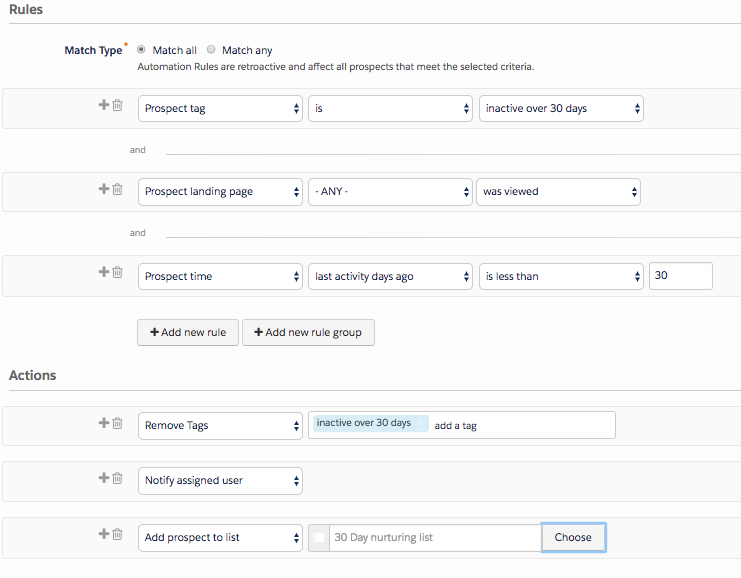
9. Give your sales team insights by logging page visits
Take a trip to Admin > Automation Settings > Page Actions > Add Page Action. Here you will not only be able to set up automation for when a prospect visits a certain URL, but you’ll be able to mark it as a Priority Page’. This means that if a prospect visits a Priority Page’ it will be shown within their prospect profile separately.
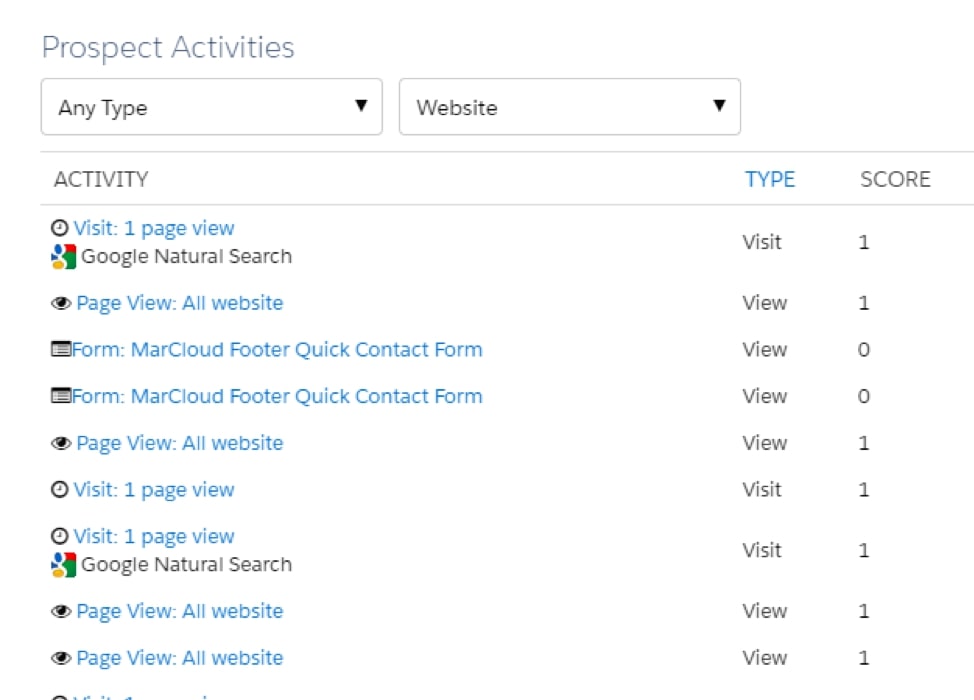
Has a high-grade prospect viewed detailed product specs or spent time on an FAQs page? This information can be handballed to the sales team to help them engage with leads with the most relevant and personalised conversation.
It’s even possible to use Page Actions to update a custom Page Visits’ field for prospects, allowing you to see precisely how many times a prospect has visited your website, in total. Given multiple visits is a good indicator of interest and potential intent, this combined with priority pages can be an automatic way to surface, nurture, and sell to prospects.
10. Custom Redirects for asset insights
Pardot Custom Redirects is allow us to track engagement with marketing content on any link on our website, even a third-party website, or any other web page - not just hosted in Pardot!
Once a prospect clicks on a link with a Pardot Custom Redirect, it will populate on their Pardot record as an activity. This can also be visible in Salesforce, which means the sales reps are able to also see at a glance what topics have been of most interest to leads and contacts.
Naturally, the additional insight from link clicks can help reveal the interests and pain points of a prospect, but you can also use the Custom Redirect Report in Pardot to see statistics for individual marketing assets, and adjust our content according to what gains the most clicks.
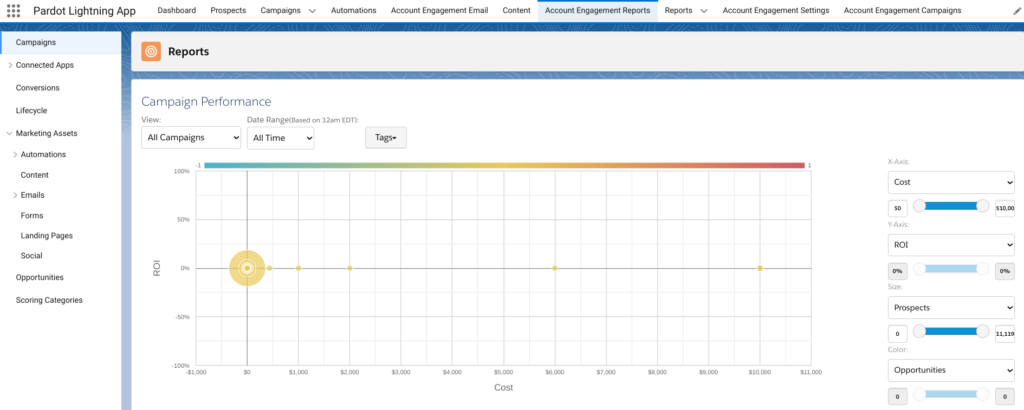
There are plenty of creative and strategic ways to use Custom Redirects, here are four to get you started.
11. Use Salesforce Lead Assignment Rules
For many, Lead Assignment Rules will already be in place in Sales Cloud CRM prior to implementing Pardot. Conveniently, instead of rebuilding these rules from scratch, you’re able to simply add Completion Actions to your Automation Rules, forms, page actions, etc. that push prospects into the active Lead Assignment Rule’ within Salesforce. This means leads are routed to the best Salesforce user based on the criteria within the rule.
It’s quick, easy, and you won’t have to change your current lead distribution process!
12. B2BMA for superior reporting
Pardot comes with plenty of out-the-box reports but where things get really exciting, is when users take advantage of the B2B Marketing Analytics app. B2BMA is an Einstein analytics app that combines Pardot and Salesforce data in one place using the Salesforce Connector.
B2B Marketing Analytics is included in Pardot Plus, Pardot Advanced, and Pardot Premium editions. It’s available to Pardot Growth users as a paid add-on. There’s also a premium version: B2B Marketing Analytics Plus, and this contains predictive analytics too - pretty neat!
With B2BMA it’s possible to build custom dashboards displaying your core KPIs and using the analytics data from both Pardot and Salesforce to truly show end-to-end performance. When it comes to demonstrating ROI, it’s a no-brainer.
These are just 12 of the expert tips I could share with you, and I hope they’re already giving you the inspiration to get more out of your Pardot and Salesforce instances!
If you’d like to chat about anything within your account, including your current setup or a future campaign, I’m all ears. We offer free Pardot and Salesforce audits, so you can always request one of these in the first instance.

Tom Ryan
Founder & CEO of MarCloud, Tom has been on both sides of the fence, client-side and agency, working with Salesforce platforms for the best part of a decade. He's a Salesforce Marketing Champion and certified consultant who loves to co-host webinars and pen original guides and articles. A regular contributor to online business and marketing publications, he's passionate about marketing automation and, along with the team, is rapidly making MarCloud the go-to place for Marketing Cloud and Salesforce expertise. He unapologetically uses the terms Pardot, Account Engagement and MCAE interchangeably.
More by Tom RyanFeatured resource
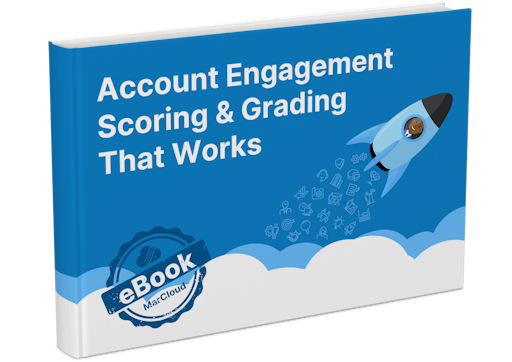
Pardot Scoring & Grading That Works
This handbook gives a straightforward explanation of Pardot grading and scoring. It outlines default versus custom models and provides a basic understanding of lead qualification. If you’ve ever wondered what the difference is between grading and scoring, we cover it.
Download now